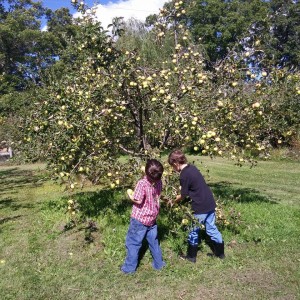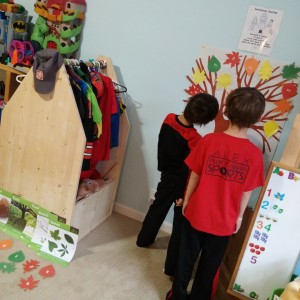Parents and providers recently discussed how resources regarding growth and change are provided throughout spring themes, but not throughout other seasons. Considering all the changes and transitions the fall season brings Mi Families (“my families“) reached out with resources, and considered the transitions currently happening in our own programs. New programs are always added upon request or changed to meet needs of participants. For example, our educational through recreation program (Adventure Academy) still offers assessments, tutoring and referral services for infants through elementary students, but we recently expanded services to offer child care. Adventure Academy now offers on-call, part-time and full-time services and we will be one of the only 5star programs in Northern Michigan (and the only 5star home based environment in the city). A loving home-based environment with above center standards that includes meals, field trips, top rated curriculums… Yes, we could settle for simply registering as a daycare, but why not strive to be more and provide more services and more resources for families? Why not provide services and resources for other providers? Providers should not be in competition, but rather a team trying to change the face of “babysitting” and make transitions easier for families. Providers should be a team learning about what issues will be debated and voted on this fall. Fall is a season all about change: changes in government, changes in nature, changes for children in new classrooms and daycare settings… Change is not always easy, especially for children, so Adventure Academy is considering different ways to approach change and transition for our students, starting with the two students who live here! Children who live in an environment shared by daycare friends have to get use to change. Thankfully these two boys are excited about the changes and even requested we reopen our center. This time they wanted to be the teachers.
Our boys are currently homeschooled, not because we hate the school system or anything dramatic, but because it meets their needs and our situation at this time. Who knows what the future holds for their educational environment – but today this one is working great! They are able to work at their own speed (some subjects slowly, some subjects skipping ahead) and they are able to grow skills in diverse areas, with diverse age groups and cultures, and in diverse environments. Homeschooling is not simply schooling at home as these boys travel far with dads job, explore locally through community field trips, and enjoy many extra curricular activities. However, homeschool does mean we created a school environment at home where they can focus on their studies and learn from their surroundings. This does not mean we have a classroom where desks face a teacher who lectures, it means we created a space that encourages exploration. It means we created a one-room school house where young children can play while listening in as older students discuss their studies (introducing future concepts). It means we have a lot of toys that foster imagination, a lot of hands on projects to try new ideas with, and a lot of books – a whole library filled with books (and other rooms with more shelves with more books)… The environment is created with one goal – to love learning.
We use many different curriculums to explore subject matters at Adventure Academy. Some curriculums are all subject based, like Little Lincoln, and some curriculums are specific subject based or age / grade focused. Mother Goose Time is a curriculum that is preschool focused, yet all ages in our program (currently 1-9 years old) enjoy the activities and themes. As last months theme of “Friends and Feelings” ends we begin to change over to a new unit, but we transition slowly – discussing the changes and comparing them. Although “Friends and Feelings” is a different topic then “In the Orchard” we found a comparison in team work. Last month we talked about the impact one can make on his/her future community vs the impact of a community working together. From planting to harvesting one farmer can work an orchard alone, but he sure is more productive working with others. And although it seems like a long process from the seeds to the produce there is measurable success while waiting for the rewarding treats. Education should be no different to measure and the rewards should be as sweet. Just as our environment does not mean desks in a line our success measurements do not mean standardized tests. Sweet results are observed when young scholars lead with their interests, abilities and needs guiding teacher choices on activities and environments. The classroom environment can be a democracy, even a team work effort when you listen to the students voice. Even the youngest of students can show you how to teach them when you learn to listen in ways other than with your ears.
It’s a hard lesson to put away text book reasoning, but you’ll learn more letting your students become the teacher. I am glad I trusted past examples and listened when our boys expressed they wanted to help teach the visiting students. When they were younger we were told one would never talk and the other would never read, yet they both taught each other to do just that. Often children have patience and understanding beyond adults, and teach with genuine passion and encouragement through each step. They don’t need to read a whole chapter book to feel they accomplished a reading goal. They cheer each other on when one holds up the shape of an apple saying “A is for _” and the other responds “APPLE!” Reading research tells us that language and literacy are the key to future academic success and the first step is teaching communication skills. How we respond to their forms of communication predicts beyond academic success. How we respond teaches children their wants, needs, interests and emotions are valued, so the boys first job as teachers was to observe how students communicate. Noticing a toddlers attempt to get them to help pick up fallen leaves the boys later created a matching leaf game indoors to continue his interest. They were excited opening the Mother Goose Time teachers guide and noting the first week was all about trees: seeds, roots, trunk, branches…and leaves.
They decided they needed to practice some of the upcoming lessons and even planned how to transition to future orchard lessons. Transitioning from last months theme they are relying on observation of emotion and interests from their friends and are learning how to balance helping others while taking time for themselves. They want time to explore the topics presented themselves and integrate further studies. They decided they need to continue working with letter “F” for “fall fun with family and friends at the farm.” They have helped plan fall fieldtrips and festivities for the friends who join us this month. If you know of a child who’d like to join us at Adventure Academy or have questions about integrating such activities to your program feel free to comment below or email Christi@MiFamilies.com. If your child’s involved in the program and they (or you) have ideas to add to our lesson plans also feel free to get in touch, as we know communication is the key to a successful program. Open communication is just another example of how our program is not the typical teacher guided format, but rather one guided by a group of learners who are learning how to work together to produce the sweetest community.
If your looking to work together with other parents and providers, or simply network for resources, please subscribe above and find us on Facebook, Twitter, Pinterest, YouTube, etc… Here’s our latest YouTube video – showcasing the boys trying out a Dance-N-Beats video to teach their friends more fall fun (and also showcases how the Mother Goose Time dance program works):









Leave a Reply